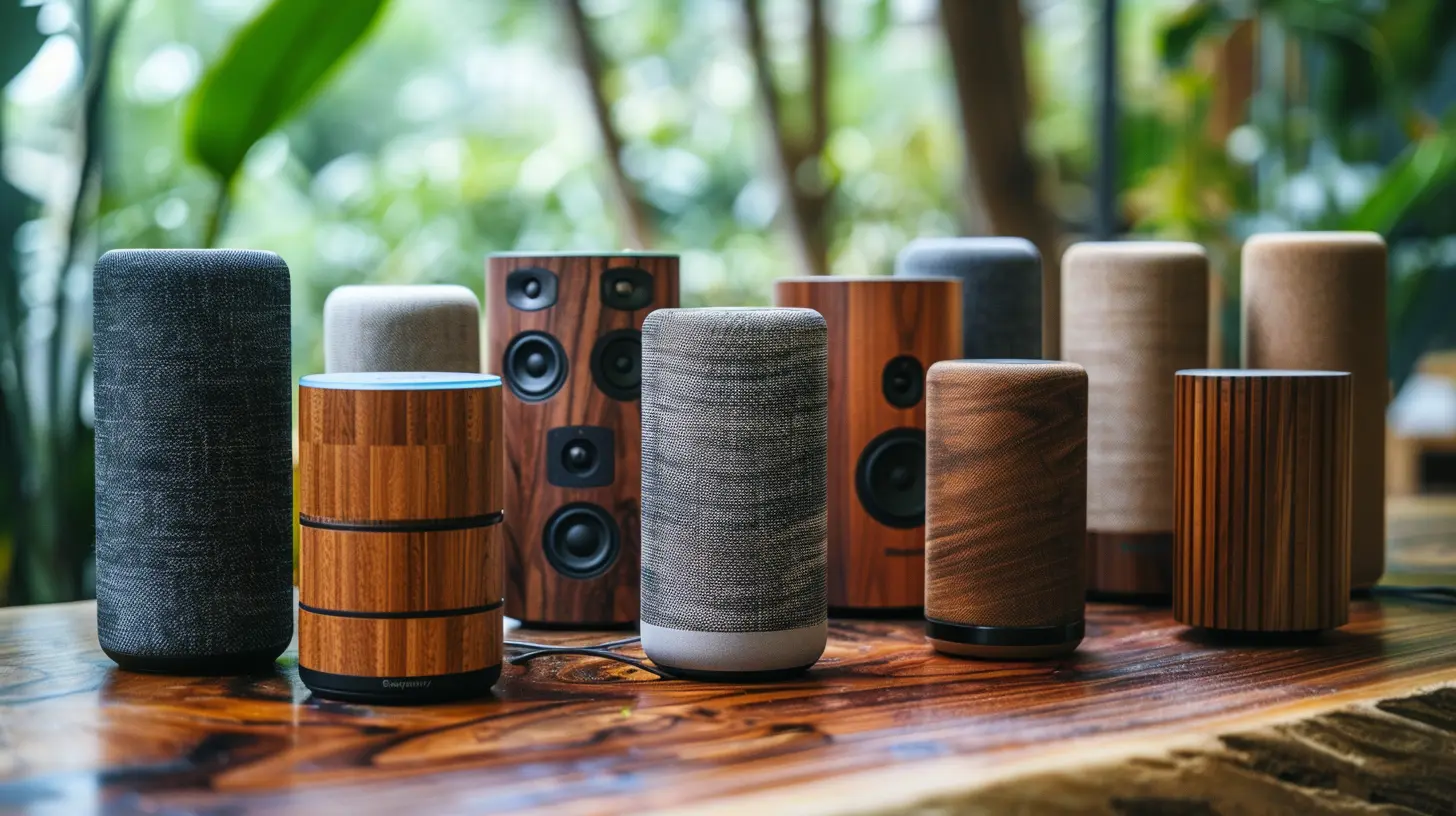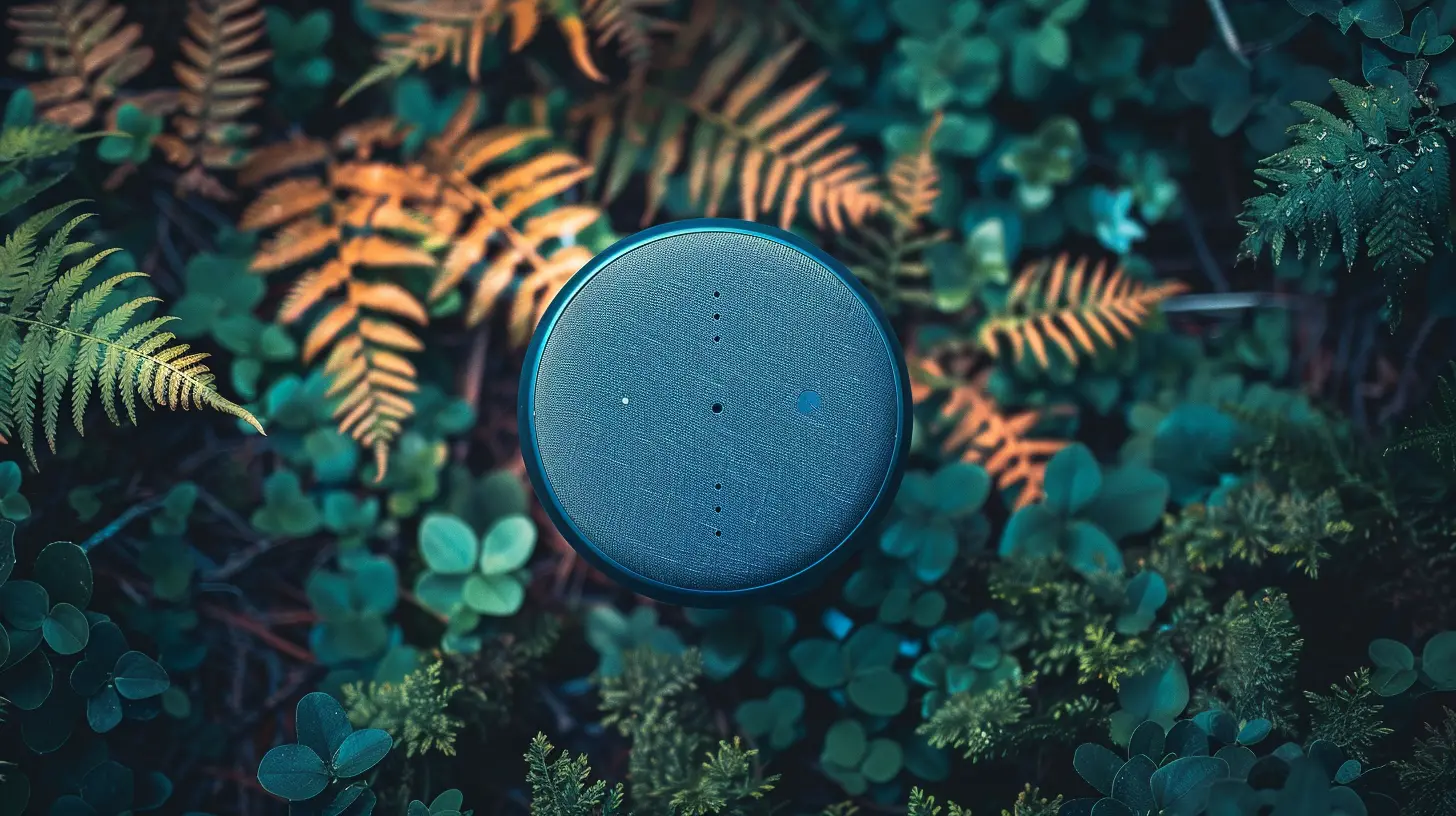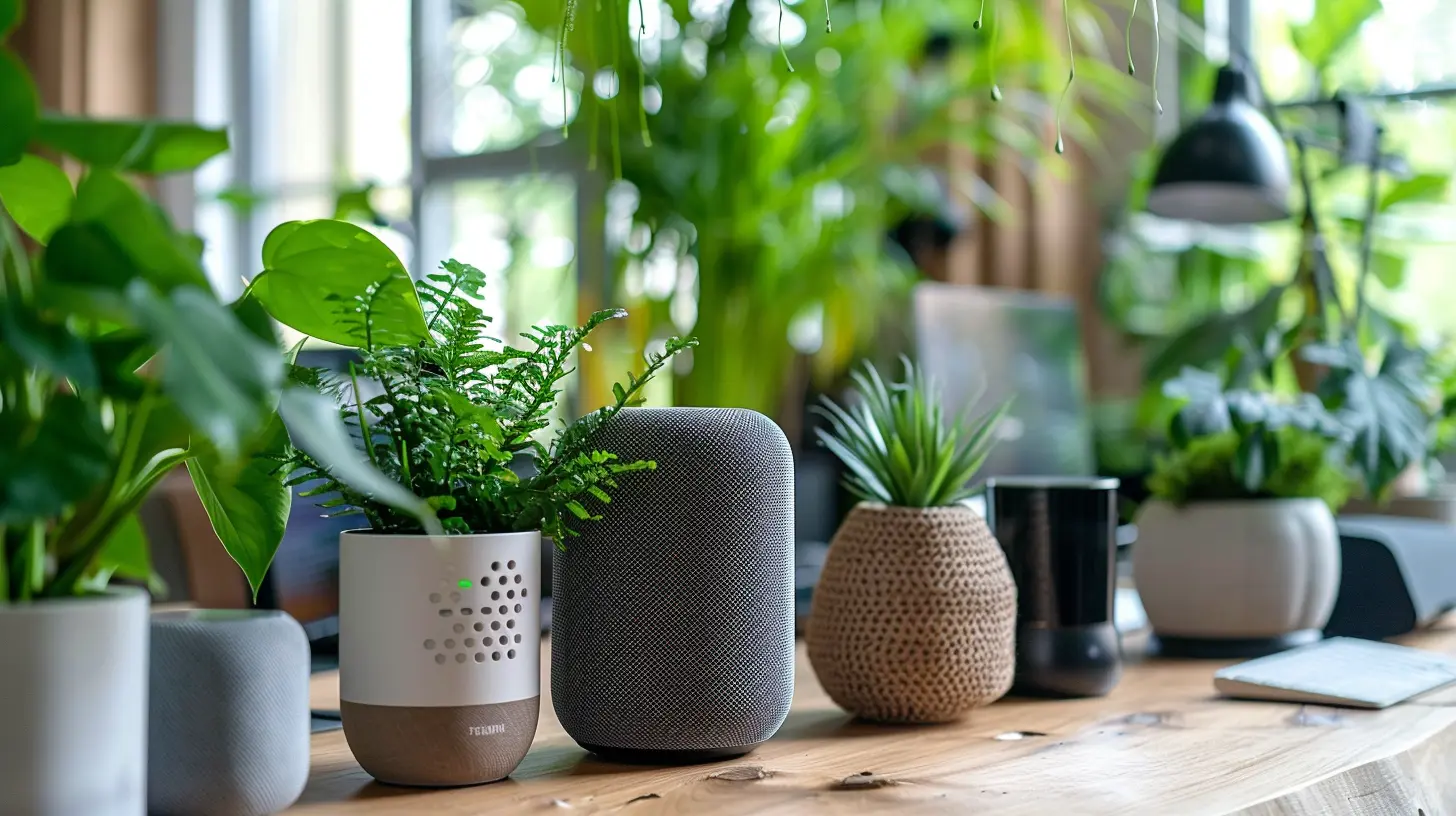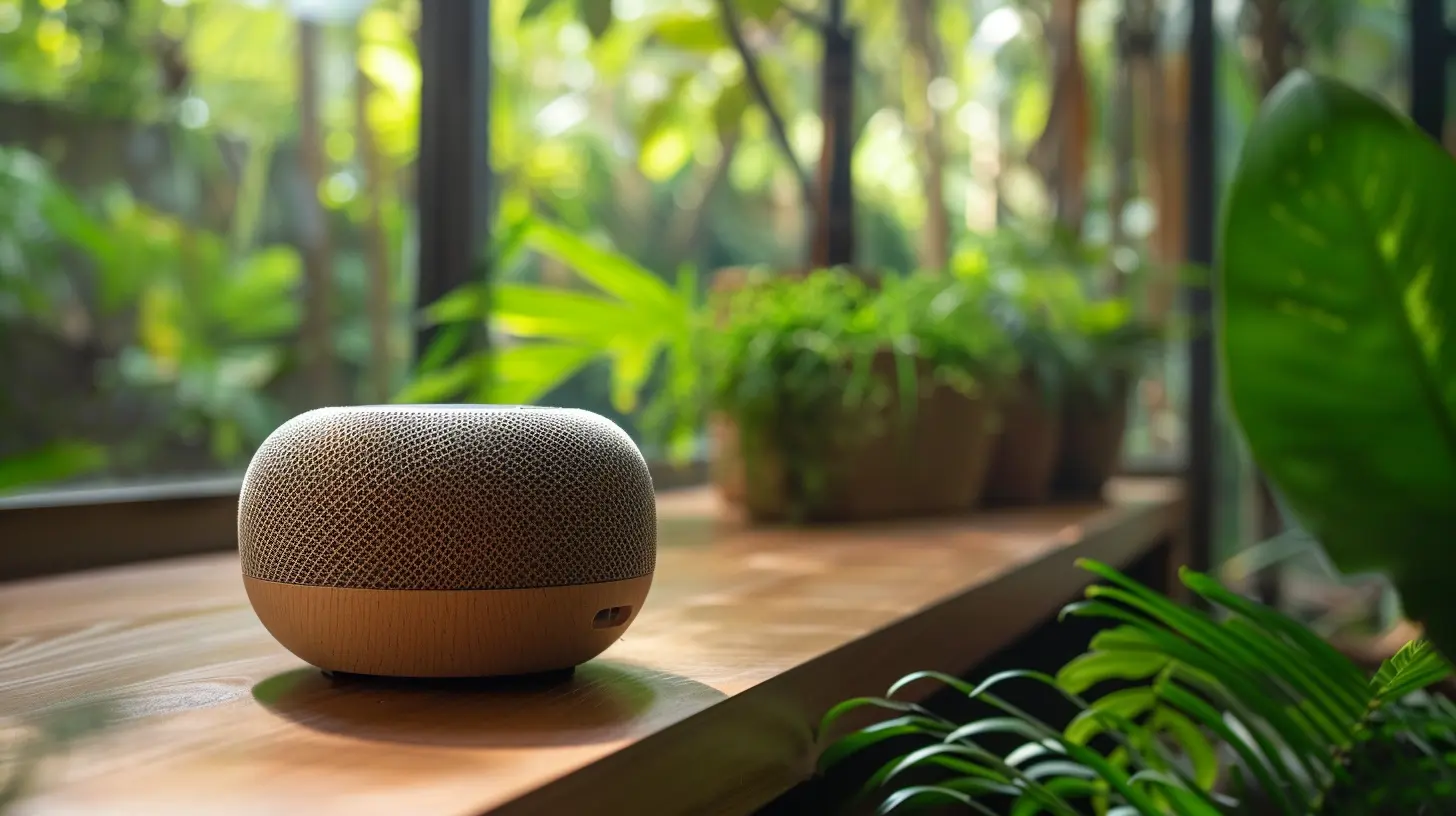Eco-Friendly Smart Speakers: Sustainable Choices for the Tech-Savvy
17 August 2025
Smart speakers have quickly found their way into our homes, delivering convenience, voice-activated control, and even the occasional dad joke. But have you ever stopped to think about what it costs the planet every time one is produced, used, or eventually tossed out?
We live in an age where sustainability is no longer a "nice to have" — it's a must. As we embrace innovation, it's time we also demand responsibility from our gadgets, especially the ones we welcome into our daily routines. If you're a tech enthusiast with a green heart, you’re probably asking: _Is there such a thing as an eco-friendly smart speaker_?
Well, there is. And it’s not just a marketing gimmick. From the materials used to build them to how they’re powered and packaged, smart speakers are getting a sustainable makeover. So grab a cup of ethically-sourced coffee, and let’s dive into how you can upgrade your tech without downgrading the planet.
Why Sustainability in Tech Matters More Than Ever
Let’s face it, the tech industry has a pretty big footprint. From mining rare earth minerals to producing e-waste, making even one high-tech gadget can leave a trail of environmental damage. Now multiply that by millions of speakers being sold every year, and you’ve got a serious issue.But here’s the good news: companies are beginning to catch on. Consumers are now more aware and intentional about their choices, putting pressure on tech giants to make more eco-conscious decisions.
When you choose an eco-friendly smart speaker, you’re not just buying a device — you’re casting a vote for the kind of future you want. It’s a small step that makes a big difference.
What Makes a Smart Speaker "Eco-Friendly"?
Good question. Not all smart speakers are created equal when it comes to sustainability. So, what separates the green from the greenwashed? Let’s break it down:1. Recycled or Low-Impact Materials
Many traditional tech products are made using virgin plastic, aluminum, and other materials that require lots of energy to extract and process. Eco-friendly versions often use:- Recycled plastics and aluminum: These reduce the demand for new raw materials.
- Sustainably sourced fabrics: Some speakers use cloth made from recycled bottles or organic cotton.
- Biodegradable components: While still rare, some models incorporate renewable materials like bamboo or bioplastics.
2. Energy Efficiency
Saving energy isn’t just about lowering your electricity bill — it’s about reducing the carbon footprint of your home. Eco-conscious smart speakers are often designed with:- Low-power standby modes
- Energy Star certification
- Smart energy monitoring features that adjust usage based on your habits
3. Minimalist Packaging
Ever buy a speaker and end up with a mountain of cardboard and plastic just to get to it? Eco-friendly brands are cutting down on packaging waste with:- Recyclable or compostable materials
- Minimal ink printing
- No unnecessary plastic wrap or inserts
4. Longer Lifespans & Repairability
Products designed to last mean less waste. Many sustainable smart speakers:- Receive regular software updates to keep functioning well over time
- Have modular parts that can be fixed or upgraded
- Offer end-of-life take-back programs for recycling
Top Eco-Friendly Smart Speaker Picks in 2024
Now that we know what to look for, let’s talk about what’s actually out there. Here are a few options that hit the sweet spot between smart functionality and sustainability.🌍 Google Nest Audio (2024 Model)
Why it’s green: The enclosure is made from 70% recycled plastic, and the fabric covering comes from recycled PET bottles. Even the magnets inside the speakers use rare-earth elements more responsibly sourced than in previous devices.Bonus: Energy optimization software learns your usage patterns and automatically reduces energy consumption.
🍃 Apple HomePod Mini
Yes, Apple is making moves. The HomePod Mini contains recycled rare earth elements in all the magnets, and its mesh fabric is made from 100% recycled plastics. The speaker is also shipped in 100% recycled fiber-based packaging.Does it still sound amazing? Absolutely. It’s compact, it’s smart, and has some serious audio muscle for its size.
🔋 Sonos Era 100
A newcomer with green intentions, this speaker is built using post-consumer recycled plastics and designed to consume less power in idle mode. It also features a removable and recyclable battery, which is music to Mother Nature’s ears.Plus: Sonos prioritizes product longevity with constant software support and easy repairability.
The Trade-Offs (Because Nothing's Perfect)
Alright, let's keep it real. While eco-friendly smart speakers are a step in the right direction, they’re not completely without environmental impact. Mining still happens. Factories still generate pollution. Shipping still burns fuel.But the point isn't to chase perfection. It's to move toward _better_. Choosing a greener option reduces your personal impact and sends a clear message to companies: We care about sustainability as much as we care about sound quality.
So yeah, maybe there’s a trade-off in price or performance sometimes. But when weighed against the future of the planet? It’s an easy call.
Small Moves, Big Impact: How You Can Be a More Conscious Tech Consumer
If switching to an eco-friendly speaker is your first sustainable tech move, awesome! But why stop there?Here are some quick, actionable tips to green your gadget game:
🔌 Unplug When Not in Use
Most smart speakers sip power even when idle. Unplug them when you're not home or use a smart plug to automate it.♻️ Recycle Old Electronics Responsibly
Don't toss your old gear in the trash. Look for certified e-waste recycling programs or trade-in options.💡 Reduce Redundancy
Do you really need a smart speaker in every room? Sometimes less is more — and better for the planet.🙌 Support Brands That Care
Put your money where your values are. Research brands that are transparent about their environmental impact.The Future of Smart Speakers (And Why It's Looking Greener)
Imagine a world where your speaker not only plays your favorite playlist but also tells you how much energy it’s saving. Where every part is biodegradable or recyclable. Where tech doesn’t just _function_ smart, but _lives_ smart.We're not there yet—but we're getting closer.
Startups are experimenting with cutting-edge bio-based materials. Innovative designs are focusing on full product lifecycle responsibility. Even major players like Amazon and Apple are pledging net-zero goals. The tide is turning.
But the future depends on us, the users. The more we demand sustainability, the louder our message becomes.
Final Thoughts: Let’s Make “Eco” the New “Smart”
Choosing an eco-friendly smart speaker may seem like a small act — but it’s one with ripples. It’s not just about staying connected or playing your favorite song on command. It’s about aligning your tech with your values.By opting for sustainable tech, we're saying that innovation doesn't have to come at the environment’s expense. We're proving that being tech-savvy and eco-conscious aren't mutually exclusive — in fact, they go hand-in-hand.
So next time you’re shopping for a smart speaker, ask yourself: _Is it smart enough to care for the planet, too?_ If it is, then hit that “Add to Cart” button with pride.
all images in this post were generated using AI tools
Category:
Smart SpeakersAuthor:

Marcus Gray
Discussion
rate this article
1 comments
Cynthia Long
Great read! It's exciting to see how smart speakers can blend technology with sustainability. Let's make eco-friendly choices together!
September 7, 2025 at 12:33 PM

Marcus Gray
Thank you! I'm glad you enjoyed the article and share the passion for merging tech and sustainability. Together, we can make a positive impact!


